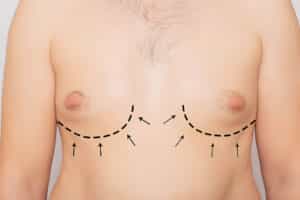I have made a point during my 15+ years as a Board-Certified Plastic Surgeon to always be straightforward about what you can expect in terms of recovery. It is such a critical component of a happy outcome. You can have the most fantastic aesthetic result in the world, but if you thought that you were… [Read More]
Blog
Get Fuller Lips that Still Look Natural
It doesn’t take a holiday like Valentine’s Day for lips to be in our collective consciousness. In the last couple of decades, increasing or replacing volume in your lips with a lip augmentation with filler procedure has become a fun and safe way for my Boston area patients to explore changes to the face. The… [Read More]
Best Option to Get Rid of Belly Fat
A consistent complaint I hear from my Boston area body contouring patients is about too much fat around the midsection. While men tend to refer to this phenomenon as a “spare tire,” and women tend to call it a “muffin top,” the problem is the same — an excess of fat in the abdominal region…. [Read More]
Improve Upper Pole Fullness with Mentor® Boost Implant
Fashion trends tend to follow a 10 year cycle. In the 1970’s, a small flat chest was en vogue. This changed to a curvier aesthetic in the 1980’s and back again to the “waif” look in the early 1990’s thanks to Kate Moss. However in 1992, a new and improved Wonderbra hit the market, permanently… [Read More]
How Expensive is a Tummy Tuck?
Body contouring is a passion of mine. I love how it can transform a patient’s entire body, sometimes with a single procedure. A tummy tuck is a great example. By removing extra fat around your middle, and excising any loose skin, I can re-sculpt your torso so that your waist appears smaller, your abdomen looks… [Read More]
Is Liposuction Worth It?
With 25+ years of expertise in body contouring, I was not surprised by the latest statistics from the American Society of Plastic Surgeons (ASPS) showing that liposuction has surpassed breast augmentation as the most popular cosmetic procedure in this country. It makes sense. Most everyone struggles with excess pockets of fat somewhere on the body…. [Read More]
Gynecomastia Questions Answered
Treating gynecomastia is one of my passions. As a body contouring expert, I love being able to sculpt the smooth, flat chest that most men desire. It’s a procedure that can not only radically improve your physical appearance, but may also profoundly improve your self-esteem. While it is estimated that almost 60% of older men… [Read More]
How to Best Prepare for a Tummy Tuck?
A dissatisfaction with the appearance of the abdomen, often referred to as a “rubber tire” around the middle, is a huge motivating force for patients to book a consultation with me to discuss body contouring with both men and women. There are any number of underlying reasons why you may be carrying some extra weight… [Read More]
What is Prejuvenation?
Preventative medicine, long a bedrock of health care in the East, has finally taken root here in the West as well. The concept is simple. Instead of only seeing the doctor when you’re sick, the focus of care is more to protect and promote your overall health and well-being in order to prevent you from… [Read More]
How to Treat Ozempic Face & Ozempic Butt
Americans’ desire to lose weight has reached a new zenith. In the last year alone, there’s been a 111% increase in prescriptions for Ozempic. This is one of a class of medicine designed to treat or prevent Type 2 diabetes. A positive side effect for some patients may be weight loss. Since extra weight can… [Read More]
- 1
- 2
- 3
- …
- 18
- Next Page »









